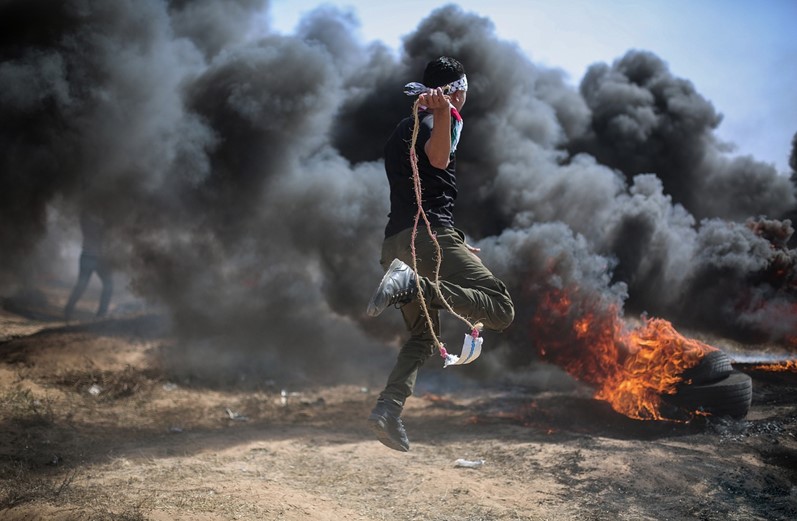Israel-Hamas War 2023

Insights for risk management decision-makers and stakeholders
Intelligence cut off date: 1000 gmt 10 october 2023
A comprehensive report on the recent conflict, including;
- Events leading up to Hamas attack on Israel
- Causes of the declining security situation inside West Bank
- Israeli political Influences undermining security preparedness
- Judiciary reforms in Israel causing civil unrest
- Collapse of the Palestinian Authority
- How the attack unfolded
- Key analysis of events to date
- What Solace Global expects to happen next
- Considerations for a wider conflict
- Advice for personnel within Gaza Strip, West Bank and Southern Israel
“It seems increasingly likely that the region is now on course to see the outbreak of a broader conflict.” This was the assessment that Solace Global Intelligence made in May 2023 when the security situation between Israel and Palestine continued to rapidly deteriorate.
With the incursion into southern Israel by the Gaza-based militant group Hamas over the weekend of 7 and 8 October, this eventuality became a reality, and the region is now on the precipice of a protracted and deadly conflict. Such a conflict will undoubtedly have significant ramifications for those operating in the region.
Consequently, this report will analyse the ongoing events, furnish practical recommendations for navigating the situation, and offer future assessments to equip decision-makers with an enhanced comprehension of the circumstances, facilitating more informed choices regarding their operations.
Events Leading Towards Hamas Attack on Israel
The events of the weekend 7 and 8 October did not occur in isolation or without precedent. Both 2021 and 2022 were consecutively recorded as being the deadliest years in the West Bank for over 15 years, and 2023 was already on the way to supersede these. Recent political developments in both the West Bank and Israel have only fueled existing tensions and have contributed to the rising rates of violence. Many of the tensions and issues underpinning the current volatility are long-standing and well-known, however recent months have seen domestic developments occur in Israel which have almost certainly been exploited by Hamas to carry out their actions.
In recent years both Israel and the Palestinian territories have seen a decline in security. As a result, the United Nations declared 2022 the deadliest year since the end of the Second Intifada in 2005. The Second Intifada is estimated to have left at least 4,300 people dead over a five-year period. Intifadas, or uprisings, are sustained periods of deadly unrest and violence across Israel and the Palestinian territories characterised by high civilian and military casualties. The Second Intifada was particularly marked by gun battles, assassinations, and tank and aerial attacks by Israeli forces. Palestinian forces meanwhile engaged in targeted bombings, gun battles, and rocket attacks. The use of suicide attacks also increased considerably during this period.
Causes of the Declining Security Situation Inside West Bank
The current decline in security has been driven by the emergence of new Palestinian militia groups inside the West Bank. Such groups include the Lion’s Den, Balata Brigades, Mujahideen Movement, Popular Resistance Movement and the Yabad Brigades. It should be noted that whilst some of these groups have only recently formed in the West Bank, they have been present in Gaza for some time.
Violence in the West Bank was driven and promoted by the far-right and ethno-nationalist members of Israel’s current governing coalition. Ministers such as Itamar Ben-Gvir, who is the country’s National Security Minister, have promoted settler violence, and further annexation of Palestinian territory. To try and stabilize the West Bank, Israeli Defence Forces (IDF) were diverted to the West Bank to contain the resulting violence, thus weakening the country’s defences on the border with Gaza.
Increasing violence in the West Bank
Simultaneously, as the West Bank witnessed an increase in violence, following the conclusion of the 2021 war between Hamas and Israel, the Israeli establishment believed that the Hamas threat had been contained and that the war-weary Hamas was shifting its focus towards rebuilding the territory’s economy. Consequently, Israel made efforts to promote economic stability in Gaza, which included granting thousands of work permits to Gazans for employment in the West Bank or Israel. In the meantime, Hamas declined participation in military operations against Israel initiated by other groups like Palestinian Islamic Jihad, further reinforcing the notion that Hamas was no longer prioritising attacks on Israel. During this period, Hamas dedicated its efforts to preparations for the operation, including the training of militants and the accumulation of weapons and equipment.
142
Palestinians killed in West Bank
37
Palestinians killed in Gaza
25
Israelis killed across Israel and the West Bank
20
Palestinians killed in Jerusalem
5
Palestinians killed in Israel
2022 fatality numbers from Euro-Med Monitor
Continued in full report…